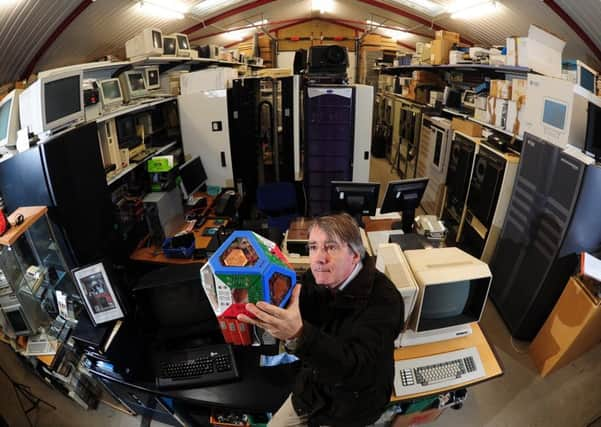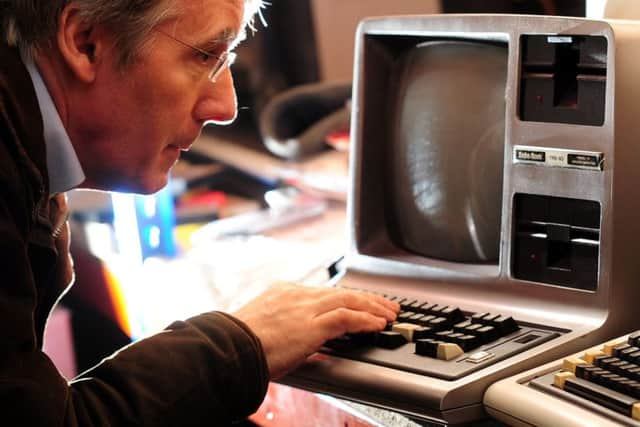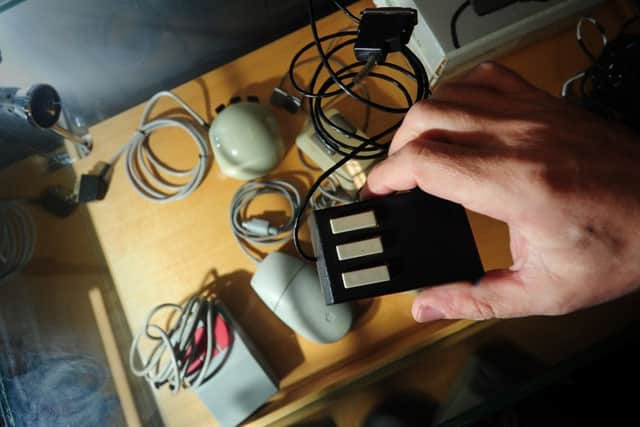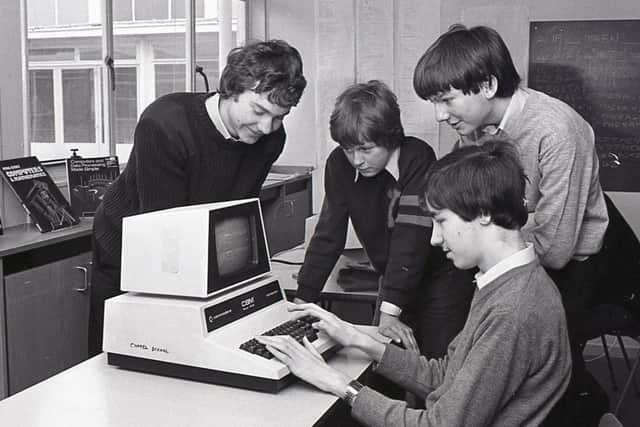40 years of the personal computer... and how some of the first ended up on a pig farm in Yorkshire


The first mass-produced, off-the-shelf personal computer to reach the high street didn’t do much, because hardly anyone knew what it was for. But it betrayed one familiar trait from the start: on its first demonstration, before the boss of the retail empire that was to sell it, it crashed.
Nevertheless, when the first TRS-80s arrived at Tandy shops a few months later, they were instant best-sellers. Some 10,000 were shifted in the first month alone.


Advertisement
Hide AdAdvertisement
Hide AdFour decades on, some of the last surviving examples of the device that started a revolution are to be found deep within the sheds of an old pig farm in the Yorkshire Wolds.
Its owner, Jim Austin, built his first PC from a kit at around the same time as Tandy’s launch. He has been collecting computers ever since, and now has around 4,000 in the maze of barns that came with the farm he bought for his family.
“I wanted to stop these things from being scrapped,” said Mr Austin, a computer scientist at the University of York. “I realise now that I’ve done my job - they never will be.”
His collection spans the smallest PC paraphernalia - one of the world’s first commercial mice, from 1982 - to the most immense - Cambridge University’s last IBM mainframe computer, which cost £24m when new.


Advertisement
Hide AdAdvertisement
Hide Ad“I’ve got a calculator from a Christmas cracker now that’s more powerful than that,” he said.
It encompasses examples from every generation of computer: mechanical, valve, transistor, and microchip, and includes a selection of “supercomputers” cast off by universities and the Ministry of Defence..
The machines have shrunk progressively since the first mainframes filled entire rooms, and 1977 is considered by buffs to be the start of the personal computing age. At a time when most microcomputers came in kit form - such as the £65 Scrumpi assembled by the teenage Mr Austin - three new models began to be sold as consumer electronics. Tandy’s TRS-80 was followed within a few months by the first mass-produced machine from Apple, the Apple II, and the futuristically-designed Commodore PET.
“The first one I used was the PET, when I was studying at Sussex University,” Mr Austin said. “That was like something from Star Trek. I could never have afforded a Tandy.”


Advertisement
Hide AdAdvertisement
Hide AdThe TRS-80 had an asking price equivalent to just under £2,000 in today’s money. It came with a chunky, typewriter-style keyboard plugged into a 12-inch black-and-white screen, which also housed the microprocessor. Floppy disks, let alone DVDs, had not been invented, so data storage and retrieval had to be done on a domestic cassette tape deck. More than 200,000 were eventually sold.
“You couldn’t really find a use for it, that was the trouble,” said Mr Austin. “Like the one I built at 17, I didn’t know what to do with it.”
But the TRS-80 could be programmed in one of the first computer languages, and it could do sums - though when in February 1977 the retailer Charles Tandy attempted to type in his salary of $150,000, its primitive tax accounting software reportedly stopped working.
The basic model came with four kilobytes of memory - around a quarter-of-a-million times less than a cheap smartphone today - and its processor was around 1,300 times slower.


Advertisement
Hide AdAdvertisement
Hide AdThe Apple II, which followed, also relied on cassette tapes for data storage, but had a colour screen and cost the equivalent of £4,000.
Today, the value of old computers is negligible, and few are rare. Mr Austin said: “It’s impossible to value the collection here. But there are 60,000 vintage machines on eBay at any one time.”
He decided to expand his collection 30 years ago when he and his wife, Jayne, moved their children to the Wolds village of Fimber, in the pasture lands between Fridaythorpe and Wetwang. “I had the sheds so I started to connect them,” he said. The pigs had long gone, though he continues to farm a few sheep on the surrounding fields.
He opens the exhibits to the public, by appointment, on alternate weekends, and is considering plans to move it eventually to York.